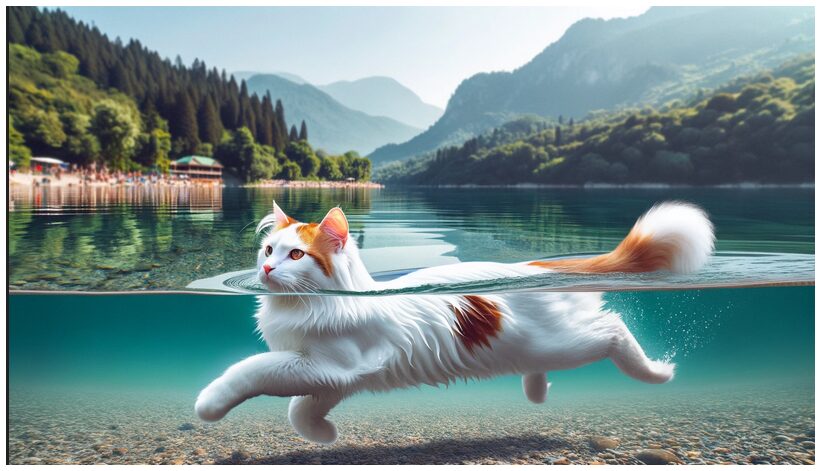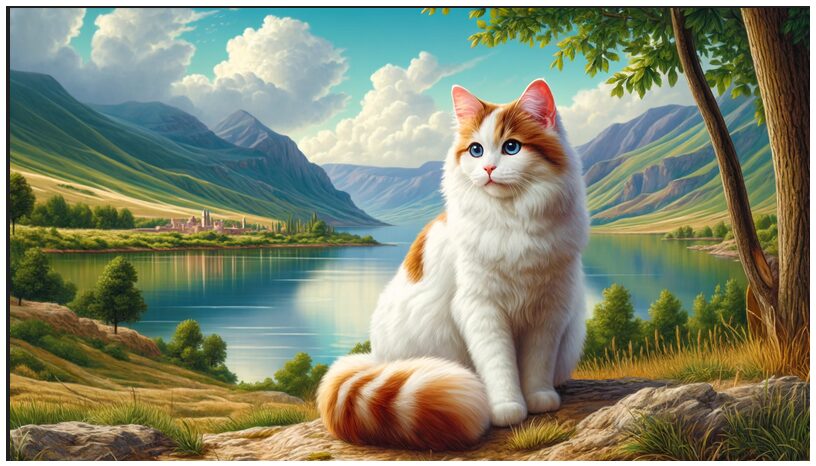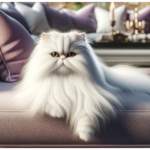Good morning, fellow cat aficionados! Today, we explore the fascinating world of Turkish Van cats, a breed as ancient as it is majestic. Known for their striking looks and playful personalities, these cats are a marvel in the feline community. Whether you’re considering adopting a Turkish Van or just curious about their unique traits, our detailed guide will provide you with all the insights you need.
Breed Origins
The Turkish Van is an ancient breed believed to have originated in the Lake Van region of eastern Turkey. This breed is often confused with the Turkish Angora but is distinct in both appearance and history. The Turkish Van is celebrated in its native country and has been a part of numerous local legends and art, symbolizing good luck.
Breed Characteristics
Turkish Van cats are medium to large in size with a muscular build, broad shoulders, and a robust body. They are most famous for their cashmere-like white coat and colored markings that usually appear on the head and tail. The eyes of a Turkish Van can be blue, amber, or odd-colored, adding to their enchanting appearance. Their semi-long hair is water-resistant, a unique feature that supports their love for swimming.

Temperament
Turkish Van cats are energetic, intelligent, and sociable. They enjoy interacting with their human families and often form a strong bond with one person in particular. Known for their “Van Pat”, they are playful and may reach out to tap you gently to grab your attention. Despite their love for activity, they also have a notable independent streak.
Ideal Home Environment
These cats are well-suited to homes that can cater to their energetic and playful nature. They do well in environments where they can explore and play. Turkish Vans appreciate having high perches and interactive toys. Their sociable nature makes them a good fit for families with older children who understand how to interact with pets respectfully.
Compatibility with Children and Other Pets
Turkish Vans generally get along well with children and other pets, especially if raised together from a young age. Their playful and friendly disposition makes them excellent family pets. However, due to their energetic nature, playtime should be supervised with younger children to ensure gentle handling.
Health and Lifespan
The breed is known for its robust health and can live up to 12-17 years. They are not prone to many genetic health issues, but it’s essential to maintain regular veterinary check-ups and vaccinations. As with all breeds, a well-balanced diet and regular exercise are key to their long-term health.
Grooming Requirements
Despite their semi-long coat, Turkish Van cats require surprisingly minimal grooming. Their coat doesn’t mat easily, thanks to its texture. A weekly brushing is usually sufficient to remove loose hair and maintain their coat’s natural sheen.
Costs and Considerations
The cost of this breed can vary widely based on the cat’s age, bloodline, and whether they are considered pet or show quality. Generally, prices range from $800 to $1,500 for kittens, while adult cats may be less expensive. Remember that the initial cost is just part of the investment; consider ongoing expenses like food, healthcare, and grooming.
Recognized Associations and Breed Standards
Several major U.S. cat associations recognize the Turkish Van, each providing a detailed breed standard:
- The International Cat Association (TICA): TICA’s Turkish Van Breed Standard
- Cat Fanciers’ Association (CFA): CFA’s Turkish Van Breed Standard
- American Cat Fanciers Association (ACFA): ACFA’s Breed Standards
Conclusion
The Turkish Van cat is a delightful addition to any home that can match their energy and need for interaction. Their affectionate nature, coupled with their striking looks and playful antics, makes them a cherished companion in many households. Whether you’re a seasoned cat owner or a first-time pet parent, the Turkish Van offers a unique blend of beauty, brains, and spirited personality.






